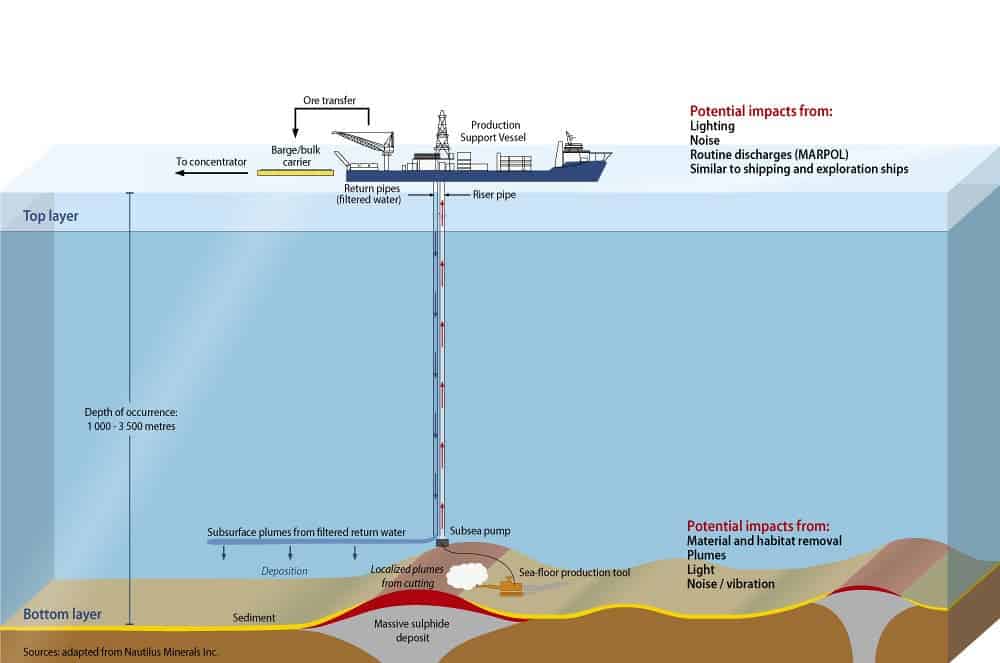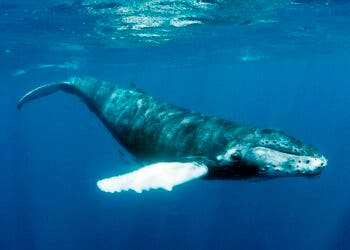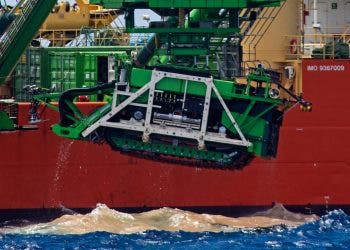Serious concerns have been raised over the potential impacts related to deep-seabed mining if it starts, especially given the vast number of unknowns and the large-scale environmental damage it can cause. Now, for the first time, scientists have done an overview of the gaps in knowledge about the ocean areas targeted, showing the science is insufficient to allow the activity to go forward safely.

Deep-sea mining (also known as deep seabed mining) generally refers to parts of the ocean over 200 meters deep. These areas are rich in biodiversity and include unique geological features, such as mountain ranges, volcanic peaks, and deep trenches, creating unique and rich environments.
While there are some deep-sea mining projects being done in territorial waters of some countries, the activity hasn’t taken off in international waters. This is because countries have to agree on an international mining code, which is currently under negotiation and debate. The International Seabed Authority (ISA) is the agency behind this task.
For governments and companies, the activity would provide a source of reliable minerals such as nickel, copper, silver and gold – all facing an increasing demand for electronic products and energy storage. For scientists and campaigners, taking out the minerals is too risky, as it would largely affect the seabed and water around it.
Seeking to settle the debate, a group of oceanographers from the University of Hawai’i at Manoa reviewed hundreds of scientific articles and interviewed dozens of stakeholders on deep-sea mining, reviewing what we know so far about the practice. They concluded that there’s just not enough science to support evidence-based decision-making to allow the activity to fully start soon.
“This gap analysis highlights how much we still need to know about deep-sea ecosystems to effectively manage seabed mining, and to even know how damaging mining will be to ocean ecosystems from the seafloor to the ocean’s surface,” Craig Smith, study co-author, said in a statement. “We must use extreme caution in moving forward with seabed mining.”
The main problems ahead
In the study, the researchers argued that deep-sea mining would lead to environmental impacts in five categories:
- removal of the resources and effects on the fauna and seafloor surface;
- generation of sediment plumes from the disturbance of the seafloor;
- chemical release;
- increases in noise, vibration and light; and
- 5) cumulative impacts.
Deep-sea mining practices could easily lead to the loss of seafloor integrity around exploited areas. They could also reduce biodiversity and fragment habitats, much like what we’re seeing on the land. There could also be conflicts with existing activities. The fishing industry, for example, could see a reduction in the fisheries catch and a displacement of fishing effort, the researchers argued.
There are no tested approaches yet to restore or rehabilitate deep-sea ecosystems or achieve a goal of no net loss of biodiversity, the study found. Also, the likely high costs and technical challenges of the restoration techniques could be impossible for the deep sea, especially considering the vast spatial scales expected to be impacted to obtain the minerals.
The researchers also surveyed different stakeholders, with almost 90% of them concluding that the scientific knowledge about the deep-sea is still too limited to minimize environmental risks and ensure the protection of the marine environment. The most cited scientific gap was comprehensive environmental baseline information for the regions where deep-seabed mining may happen.
“Considering that the ecosystems targeted for mining are among the most pristine and biodiverse in the ocean, we must use extreme caution in moving forward with seabed mining. Otherwise, mining in the deep sea may accelerate the crises of species extinctions and loss of ecosystem services we are witnessing on our planet,” Smith said in a statement.
The study was published in the journal Marine Policy.





